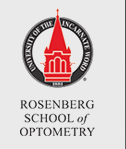Medical Subject Headings
Mucormycosis; Sphenoid Sinus; Headache; Rhizopus; Giant Cell Arteritis
Abstract
Background: Acute invasive rhino-orbital-cerebral mucormycosis (ROCM) is a rare fungal infection commonly caused by Rhizopus species. It occurs in immune- compromised individuals who have acquired immune deficiency syndrome (AIDS), leukemia, uncontrolled diabetes mellitus, or organ transplant patients who are on immunosuppressive therapy. Diagnosing invasive ROCM is challenging because its clinical presentation can be nonspecific, and it is not frequently observed in ophthalmic practices. Case Report: A 66-year-old Hispanic male with poorly controlled diabetes mellitus presented with the complaint of severe headache and retrobulbar pain in the right eye. An ophthalmic examination revealed normal ocular health in both eyes. Computerized tomography scan showed mild inflammatory mucosal thickening in the sinuses. Initially, he was diagnosed and treated for giant cell arteritis. The patient’s vision deteriorated to no light perception in the right eye with persistent 10 out of 10 headache and eye pain despite various treatments. Further evaluation revealed ROCM involving the sphenoid sinus. This was confirmed by a positive smear and culture of Rhizopus species from the sinus and from the patient’s symptoms improving with antifungal treatment. Conclusion: Sphenoid sinusitis is an unusual site of involvement with ROCM. The absence of nasal drainage adds to the difficulty of diagnosis without contrast imaging. Although rare, acute invasive ROCM should always be considered in any uncontrolled diabetic or immunosuppressed patient with acute headache and vision loss.
Recommended Citation
Le T, Wentworth G. Headache and Vision Loss as Initial Symptoms for an Acute Invasive Rhino-orbital-cerebral Mucormycosis. Optometric Clinical Practice. 2024; 6(1):8. doi:https://doi.org/10.37685.uiwlibraries.2575-7717.5.2.1019. https://doi.org/https://doi.org/10.37685.uiwlibraries.2575-7717.5.2.1019
Creative Commons License

This work is licensed under a Creative Commons Attribution 4.0 International License.
Digital Object Identifier (DOI)
https://doi.org/10.37685.uiwlibraries.2575-7717.5.2.1019
Included in
Adult and Continuing Education and Teaching Commons, Fungi Commons, Health and Physical Education Commons, Medical Microbiology Commons, Medical Pathology Commons, Optometry Commons, Other Education Commons, Other Medicine and Health Sciences Commons, Other Teacher Education and Professional Development Commons

